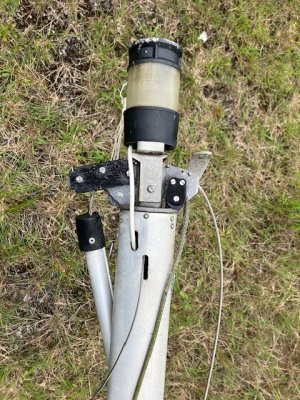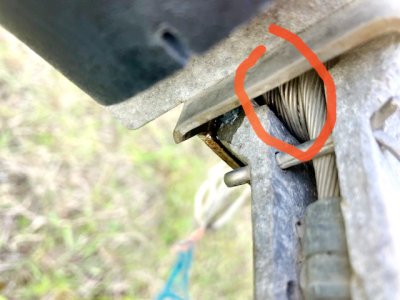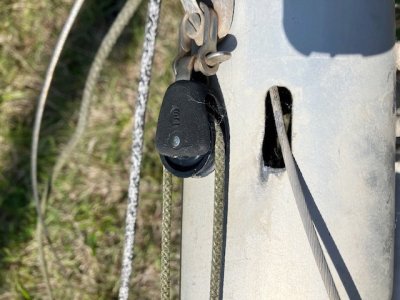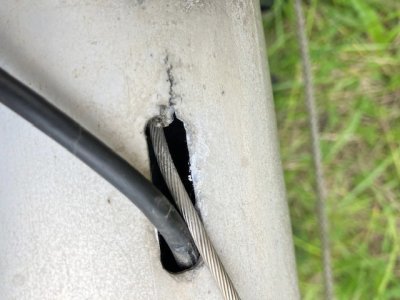steve yates
Well-known member
Mast is off to remove and replace standing rigging on my wee boat. (bradwell 18) The cap shrouds and lowers go through a slot into the mast, (pic 1) then run up inside the mast and loop over something at top of the mast. (bolt or rod probably) I wasn't expecting that! (pic 2) There are no tangs or tball fittings or similar.
It looks like a simple concept but with someobvious flaws, with the line of the shrouds and the chance for wear at the slots. Pic 3 shows the cap shroud wearing a groove in the mast and pic 4 a crack at top of the slot where the lower enters the mast.




1) Has anyone come across this as a rigging method before? what are the pros and cons and would you keep it or change it completely?
2) To access it I need to remove the mast head, any tips and advice on removing it before I blunder in?
3) If I start from scratch, can I utilise the slots in the mast?
4) Whats the best way to repair that crack in the lower slot?
and the big queation for me,
5) If I change the way the rigging is fitted, whats the best way to measure up for what is effectively a new rig without the old one as a template? (the cap shrouds couldn't be tightened enough anyway previously) The old rigging had swaged studs that threaded into bottle screws. I was hoping to reuse these but I'm thinking my only realistic method is to use stalock or similar as I can't see how I can measure this up accurately enough?
Thanks.
It looks like a simple concept but with someobvious flaws, with the line of the shrouds and the chance for wear at the slots. Pic 3 shows the cap shroud wearing a groove in the mast and pic 4 a crack at top of the slot where the lower enters the mast.




1) Has anyone come across this as a rigging method before? what are the pros and cons and would you keep it or change it completely?
2) To access it I need to remove the mast head, any tips and advice on removing it before I blunder in?
3) If I start from scratch, can I utilise the slots in the mast?
4) Whats the best way to repair that crack in the lower slot?
and the big queation for me,
5) If I change the way the rigging is fitted, whats the best way to measure up for what is effectively a new rig without the old one as a template? (the cap shrouds couldn't be tightened enough anyway previously) The old rigging had swaged studs that threaded into bottle screws. I was hoping to reuse these but I'm thinking my only realistic method is to use stalock or similar as I can't see how I can measure this up accurately enough?
Thanks.
Last edited:
